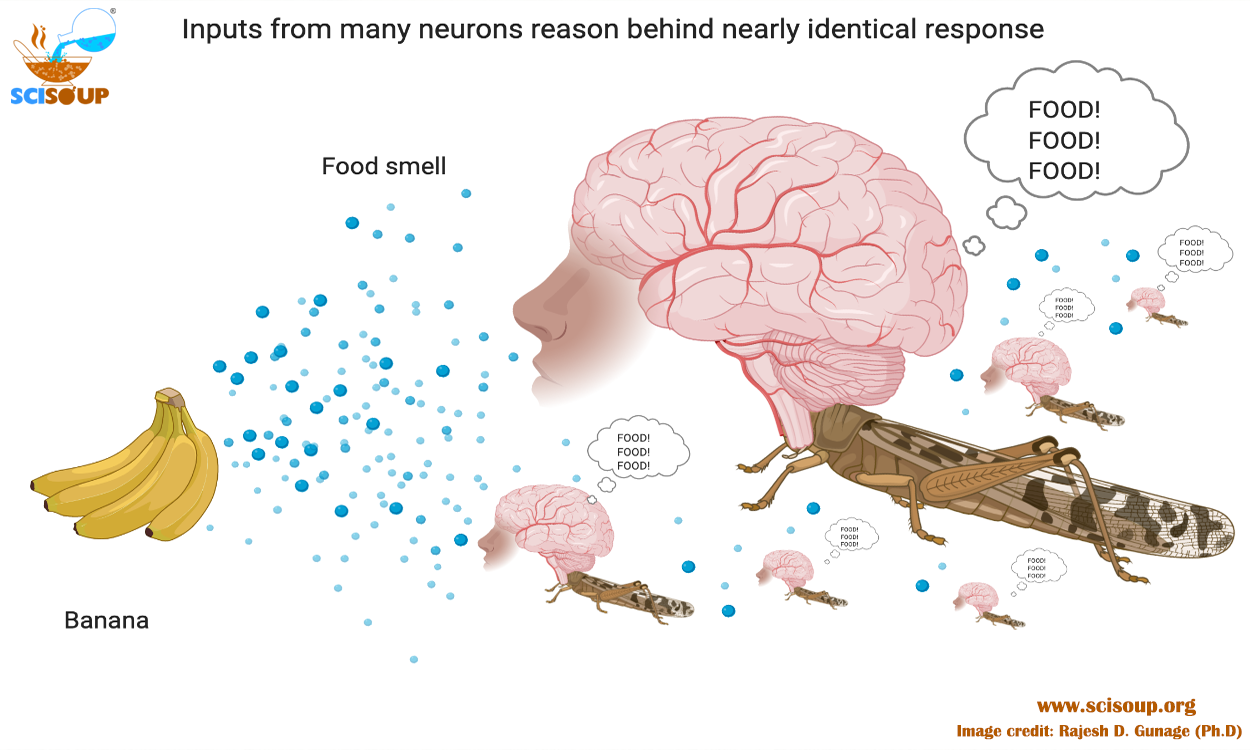
IIT Kanpur researchers find Insect brain works a lot like humans when it comes to olfaction (sense of smell).
JUL 23, 2020 | Written by RAJESH D. GUNAGE, RATNESHWAR THAKUR
Rose or mango smell in the summer for most of us is a pleasant experience. Ever wondered how we all really acquired that association of ‘rose or mango smell’ with ‘pleasantness’. The brain cells called neurons controls these and all other activities that we perform. Interestingly, Neurons form an intricate network during early development and are refined during adulthood.
These neuronal connections differ from one individual to another and yet both individuals can still show the same behavior. How does this consistency arise despite connectivity randomness inherent in the system? This puzzle inspired Dr. Nitin Gupta’s team to dig deeper into such neural networks.
Now Dr. Nitin Gupta and his team members at Indian Institute of Technology (IIT), Kanpur - reveal how the brains of different individuals are able to respond similarly to sensory stimuli despite having differences in the underlying brain connections. The results of this study have been published in the journal of ‘Nature Communications’.
 In this study, Aarush Mittal, a team member of Dr. Gupta’s group collaborated extensively to use mathematical modeling and Locust brain activity as a proxy. Similar experiments were also performed with Fruit flies. They used the insect olfactory circuit (Brain part for sense of smell) as a model to understand what controls response similarity between individuals.
In this study, Aarush Mittal, a team member of Dr. Gupta’s group collaborated extensively to use mathematical modeling and Locust brain activity as a proxy. Similar experiments were also performed with Fruit flies. They used the insect olfactory circuit (Brain part for sense of smell) as a model to understand what controls response similarity between individuals.
For any two individuals to do something in similar way require a formal training, for example - like learning to play any game or instrument. Interestingly, this is not entirely true; there are some preferences that are innate and do not require training, for example the liking for the smell of flowers or fruits. This is true for all organisms, and even insects of the same species respond similarly without any prior training. This is true despite variations in the brain wirings across individuals.
 This was a puzzling paradigm and authors have found answers to this in the way the insect brain is wired. For this the researchers put a smell in front many untrained insects and found surprisingly similar activity. How is this possible? Microscopic observation of two insect brains side by side showed a multilayered brain structure, much like an office building. Each brain layer has many neurons talking to numerous neurons in the next layer (As shown in the figure). This convergence helps convey correct information from one layer to the next. “The multi-layered olfactory circuit seen in insects is very similar to the human brain.” says Dr. Nitin Gupta.
These results can be extrapolated to understand how the smell of a rose or deer musk (Kasturi) may generate similar responses in different people. Understanding the insect brain can help us control Locust swarms in the future to avoid agricultural loss or control mosquitoes to avoid various diseases.
This was a puzzling paradigm and authors have found answers to this in the way the insect brain is wired. For this the researchers put a smell in front many untrained insects and found surprisingly similar activity. How is this possible? Microscopic observation of two insect brains side by side showed a multilayered brain structure, much like an office building. Each brain layer has many neurons talking to numerous neurons in the next layer (As shown in the figure). This convergence helps convey correct information from one layer to the next. “The multi-layered olfactory circuit seen in insects is very similar to the human brain.” says Dr. Nitin Gupta.
These results can be extrapolated to understand how the smell of a rose or deer musk (Kasturi) may generate similar responses in different people. Understanding the insect brain can help us control Locust swarms in the future to avoid agricultural loss or control mosquitoes to avoid various diseases.
On the other hand, in case of humans, many advertising or food companies make use of our innate preferences to sell us goods. We can envision a far better use of the same knowledge to improve the quality of education in the schools by leveraging the innate preferences as motivational cues.
For this study Dr. Gupta’s group collaborated with Andrew C. Lin (University of Sheffield, UK). The study was funded by the DBT-Wellcome India Alliance.
Journal Reference:
Multiple network properties overcome random connectivity to enable stereotypic sensory responses
Acknowledgement and Disclaimer:
Authors claim no competing interest. The report is prepared on the basis of inputs provided by the research team.

